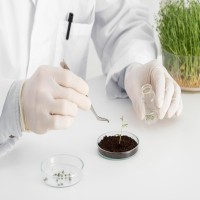In the world of agriculture, where the demand for increased crop yields meets the pressing need for sustainability, plant growth promoters have emerged as essential tools for modern farming. These naturally derived substances and beneficial microorganisms play a pivotal role in fostering healthier crops, reducing environmental impacts, and ensuring food security. This article explores the concept of plant growth promoters, their mechanisms of action, and their significance in contemporary agriculture.
The Essence of Plant Growth Promoters
Plant growth promoters, often referred to as biostimulants or growth enhancers, are a diverse group of natural or naturally derived substances that stimulate and support plant growth and development. Unlike traditional fertilizers, which primarily provide essential nutrients, growth promoters work in tandem with plants to optimize their growth potential.
How Plant Growth Promoters Work
Plant growth promoters employ various mechanisms to enhance plant performance:
- Improved Nutrient Uptake: Many growth promoters contain compounds that enhance nutrient uptake and utilization by plants. They can activate specific metabolic pathways, making nutrients more accessible to plants and reducing the need for synthetic fertilizers.
- Root Development: Some growth promoters stimulate root growth, resulting in a more extensive and efficient root system. This allows plants to absorb water and nutrients more effectively.
- Stress Tolerance: Growth promoters often bolster a plant’s ability to withstand environmental stressors. They induce the production of stress-resistance proteins and antioxidants, helping plants endure challenges like drought, heat, or disease.
- Enhanced Photosynthesis: Certain growth promoters can enhance photosynthetic activity, leading to increased energy production and overall plant vigor.
- Microbial Partnerships: Beneficial microorganisms, such as mycorrhizal fungi and plant growth-promoting rhizobacteria (PGPR), establish symbiotic relationships with plants. They improve nutrient uptake, protect against pathogens, and contribute to overall plant health.
Types of Plant Growth Promoters
Plant growth promoters come in various forms, each offering unique benefits:
- Seaweed Extracts: Derived from marine algae, seaweed extracts are rich in nutrients, amino acids, and plant growth regulators. They are known for their ability to enhance root development, nutrient uptake, and stress tolerance in plants.
- Humic and Fulvic Acids: These organic substances, found in soil and natural environments, are extracted and used as growth promoters. They improve soil structure, nutrient availability, and water retention.
- Beneficial Microorganisms: Products containing beneficial bacteria, mycorrhizal fungi, or other microbes can be applied to enhance nutrient uptake, protect against pathogens, and promote overall plant health.
- Amino Acids and Protein Hydrolysates: These growth promoters contain organic compounds that act as natural growth stimulants. They are often used to improve nutrient absorption and overall plant vigor.
Environmental and Economic Benefits
The use of plant growth promoters offers several advantages for both the environment and farmers:
- Reduced Chemical Dependency: By reducing the need for synthetic fertilizers and pesticides, growth promoters minimize environmental pollution and promote sustainable farming practices.
- Enhanced Soil Health: Growth promoters improve soil microbial activity, enhance soil structure, and promote nutrient cycling, leading to improved soil health and fertility.
- Resource Efficiency: Increased yields achieved with growth promoters lead to resource efficiency, making agriculture more sustainable and economically viable.
Conclusion
Plant growth promoters are indispensable assets in modern agriculture, fostering healthier crops, reducing chemical dependency, and contributing to sustainable farming practices. As we navigate the challenges of feeding a growing global population while preserving the environment, growth promoters stand as essential tools in the quest for a greener and more productive agricultural landscape. Their role in nurturing healthy crops for a sustainable future is paramount in shaping the future of agriculture.

